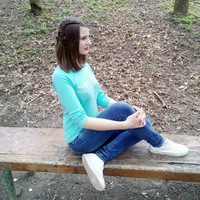
1. was isaac newton a bright child? 2) when did newton begin to study theory of gravitation? 3)
what did newton find about white light? 4) how did newton demonstrate his discovery? 5) what did newton's law of universe square join? 6) where was he buried? ответьте пж срочно надо 0
0
 0
0
Ответы на вопрос
 Внимание! Ответы на вопросы дают живые люди. Они могут содержать ошибочную информацию, заблуждения, а также ответы могут быть сгенерированы нейросетями. Будьте внимательны. Если вы уверены, что ответ неверный, нажмите кнопку "Пожаловаться" под ответом.
Внимание! Ответы на вопросы дают живые люди. Они могут содержать ошибочную информацию, заблуждения, а также ответы могут быть сгенерированы нейросетями. Будьте внимательны. Если вы уверены, что ответ неверный, нажмите кнопку "Пожаловаться" под ответом.

2) In 1684, Newton began to watch gravity. He developed his theory of universal gravitation, which used the so-called law of inverse square.
3) Newton built the first reflector telescope and developed a color theory based on observations of the splitting of white light into the spectrum in an optical prism.
4) Newton made his discovery only 16 years later, finding that all bodies in the universe force one another to attract one another by nature - the Law of Universal Attraction.
5) /
6) King Newton's decree was buried in Westminster Abbey. On his grave are the words: “Here lies Sir Isaac Newton, a nobleman who, with an almost divine reason, was the first to demonstrate with the torch of mathematics the motion of planets, the paths of comets and the tides of the oceans.
 0
0
 0
0

Isaac Newton was indeed considered a bright child. He displayed exceptional intelligence and curiosity from a young age, often engrossed in solitary pursuits and experimenting with mechanical devices.
Newton began studying the theory of gravitation in the late 1660s and early 1670s. His interest in the subject was sparked by his observations of the falling apple, which led him to ponder the nature of gravity.
Newton found that white light is composed of a spectrum of colors. He conducted experiments using prisms and demonstrated that when white light passes through a prism, it separates into its constituent colors, creating a spectrum of colors, such as those seen in a rainbow.
To demonstrate his discovery, Newton conducted a famous experiment known as the "Newton's prism experiment." He allowed sunlight to pass through a small hole in a window shutter and directed the beam of light through a glass prism. The prism refracted the light, causing it to separate into its component colors, thus proving that white light is composed of a spectrum of colors.
Newton's law of universal gravitation states that every particle of matter attracts every other particle with a force that is directly proportional to the product of their masses and inversely proportional to the square of the distance between them. In other words, the force of gravity between two objects decreases as the distance between them increases and increases as their masses increase.
Isaac Newton was buried in Westminster Abbey in London, England. His tomb is located in the nave of the abbey and is marked by a monument that honors his contributions to science and mathematics.
 0
0
 0
0
Топ вопросов за вчера в категории Английский язык
Последние заданные вопросы в категории Английский язык
-
Математика
-
Литература
-
Алгебра
-
Русский язык
-
Геометрия
-
Английский язык
-
Химия
-
Физика
-
Биология
-
Другие предметы
-
История
-
Обществознание
-
Окружающий мир
-
География
-
Українська мова
-
Информатика
-
Українська література
-
Қазақ тiлi
-
Экономика
-
Музыка
-
Право
-
Беларуская мова
-
Французский язык
-
Немецкий язык
-
МХК
-
ОБЖ
-
Психология
-
Физкультура и спорт
-
Астрономия
-
Кыргыз тили
-
Оʻzbek tili





















